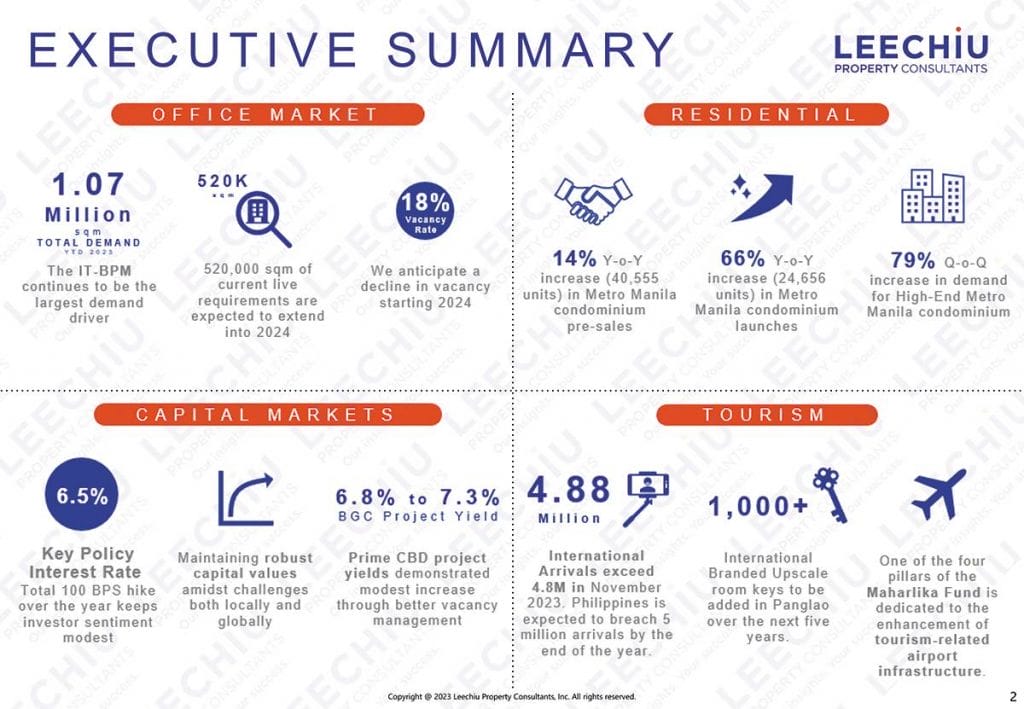“The Philippine office market performed better than expected this year amid geopolitical uncertainties and looming fears that hybrid work will cause the market to contract significantly similar to major cities globally,” according to Mikko Barranda, director for Commercial Leasing at Leechiu Property Consultants.
Full year 2023 aggregate office demand for the country increased by eight percent from 2022, recording 1.07 million square meters of newly leased space. This brought down overall vacancy to 18 percent from 19 percent.
Taking into account the total contractions for the period, this brings net demand year-on-year growth rate to 31 percent.

In a per location basis, Metro Manila recorded 79 percent of the newly leased space, with the Bay Area receiving majority at 26 percent.
Notably, 85 percent of this leased space in the Bay Area was taken up by POGO companies.
Meanwhile, for the provincial areas, Cebu and Clark received the highest take-up at 54 percent and 17 percent, respectively. Bulk of the space was leased out by IT-BPM tenants for both locations.
IT-BPM companies are still the primary source of office space demand nationwide at 42 percent.
This was followed by demand from POGO companies which came back this year, taking up 17 percent of leased space.
The remaining space was leased by traditional occupiers who are driven by the flight to quality behavior as they moved to more efficient and cost-effective buildings.
Historically, IT-BPM demand hovered around 500K square meters annually before the hybrid work setups were adopted.
In 2022 and 2023, these demand levels were reached even with the widespread hybrid work setup. Additionally, traditional occupiers have shown an increasing appetite for new space.
Moreover, there are about 520,000 square meters of live requirements that remain unserved which can be a predictor of requirements into the next year.
Based on this, we can forecast a similar demand level to continue in the coming periods.
Current absorption levels show healthy demand for office space.
“However,” Barranda said, “there is still a significant pipeline of buildings and office space that will be introduced to the market which, taken with forecast demand, will cause a gradual decrease in vacancy rates in the coming periods.“
